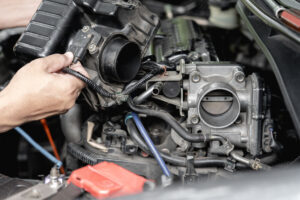Different Methods For Fuel Delivery
It doesn’t matter if you’re running an old school carb or a late model fuel injection. There’s a science to getting the fuel from the tank to the engine while meeting the engine’s requirements. Here are some examples of how it can be done.
There are several different types of fuel pumps on the market. Low-pressure applications for carburetion come in a bunch of different styles. The first style bolts to the block and is driven by a lobe off the cam and a drive rod. It will supply between 3 and 7 psi to a carburetor, which is really all it needs. But in some cases, there are mechanical pumps that can supply EFI pressures.
Electric fuel pumps can be internally or externally regulated and they come in a variety of sizes. In-line pumps bolt to the frame rails or the underside of the vehicle and can be viewed as the most universal because they come in a variety of sizes that cover virtually any horsepower level. Some are internally regulated but most require the use of an adjustable fuel pressure regulator.
An adjustable fuel pressure regulator’s job is to control the amount of pressure coming from the fuel pump going to the injectors. Once it reaches the set level, there’s a diaphragm inside that the fuel bypasses and heads to the return side. From there it makes its way back to the tank.
There are a lot of components in a fuel system so before you go out and buy any parts do a little research and find out what kind of fuel delivery your engine needs – it’s all based on horsepower!









